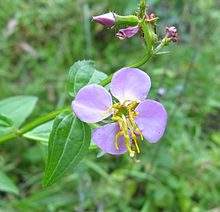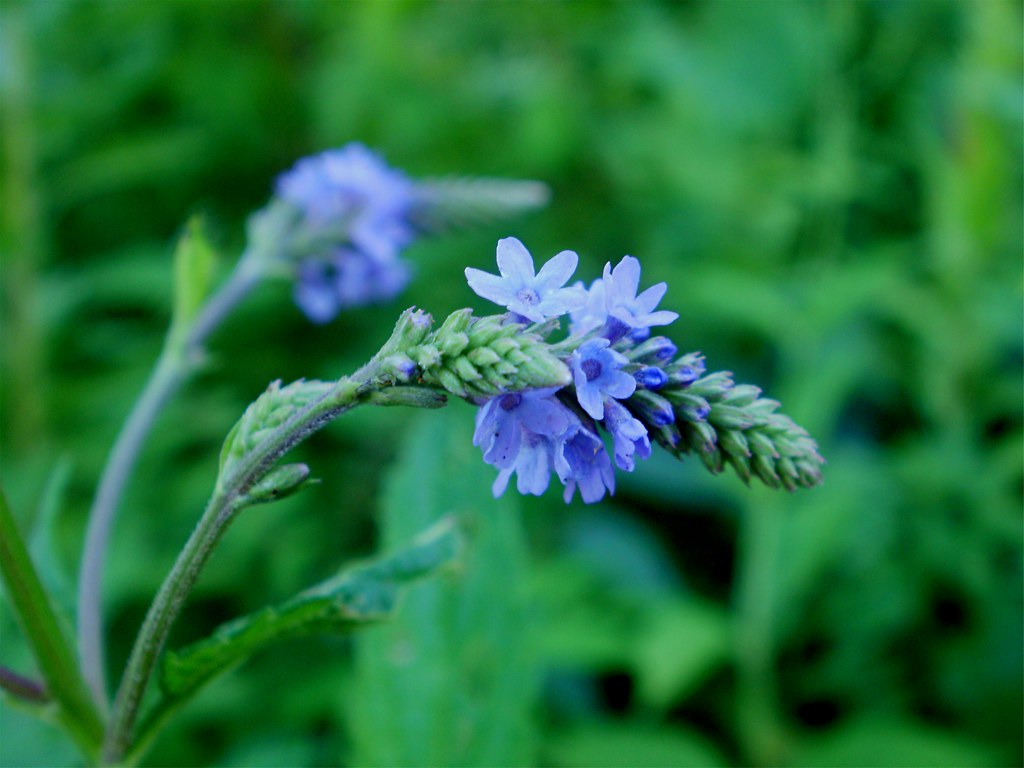September 9.
Yesterday and to-day have felt about as hot as any weather this year.
The potato-balls lie ripe in the fields.
The groundsel down is in the air.
The last day of August I saw a sharp-nosed green grasshopper.
The goldenrods resound with the hum of bees and other insects.
Methinks the little leaves now springing, which I have called mullein, must be fragrant everlasting (?).
I believe that I occasionally hear a hylodes within a day or two.
In front of Cæsar's, the Crotalaria sagittalis, rattle-pod, still in bloom, though the seeds are ripe; probably began in July.
Also by Cæsar's well, Liatris scariosa, handsome rose-purple, with the aspect of a Canada thistle at a distance, or a single vernonia. Referred to August. Ah! the beauty of the liatris bud just bursting into bloom, the rich fiery rose-purple, like that of the sun at his rising. Some call it button snakeroot.
Those crotalaria pods would make pretty playthings for children.
The potato-balls lie ripe in the fields.
The groundsel down is in the air.
The last day of August I saw a sharp-nosed green grasshopper.
The goldenrods resound with the hum of bees and other insects.
Methinks the little leaves now springing, which I have called mullein, must be fragrant everlasting (?).
I believe that I occasionally hear a hylodes within a day or two.
In front of Cæsar's, the Crotalaria sagittalis, rattle-pod, still in bloom, though the seeds are ripe; probably began in July.
Also by Cæsar's well, Liatris scariosa, handsome rose-purple, with the aspect of a Canada thistle at a distance, or a single vernonia. Referred to August. Ah! the beauty of the liatris bud just bursting into bloom, the rich fiery rose-purple, like that of the sun at his rising. Some call it button snakeroot.
Those crotalaria pods would make pretty playthings for children.
H. D. Thoreau, Journal, September 9, 1852
The goldenrods resound with the hum of bees and other insects. See August 21, 1852 ("The bees, wasps, etc. are on the goldenrods, improving their time before the sun of the year sets."); August 30, 1859 ("Now that flowers are rarer, almost every one of whatever species has bees or butterflies upon it."); September 21, 1856 ("[On top of Cliff, behind the big stump] is a great place for white goldenrod, now in its prime and swarming with honey-bees."); October 11, 1856 ("The white goldenrod is still common here, and covered with bees."); October 12, 1856 ("It is interesting to see how some of the few flowers which still linger are frequented by bees and other insects. ")
Those crotalaria pods would make pretty playthings for children. See August 1, 1856 ("Crotalaria . . . some pods fully grown. "); October 3, 1856 ("I detect the crotalaria . . . by hearing the now rattling seeds in its pods as I go through the grass, like the trinkets about an Indian's leggins, or a rattlesnake."); October 3, 1858 ("As I go through the Cut, I discover a new locality for the crotalaria, being attracted by the pretty blue-black pods"); October 3, 1858 ("It is interesting to consider how that crotalaria spreads itself, sure to find out the suitable soil. One year I find it on the Great Fields and think it rare; the next I find it in a new and unexpected place. It flits about like a flock of sparrows, from field to field.")
Liatris blooming
rich fiery rose-purple
like the sun rising.







